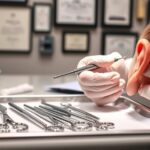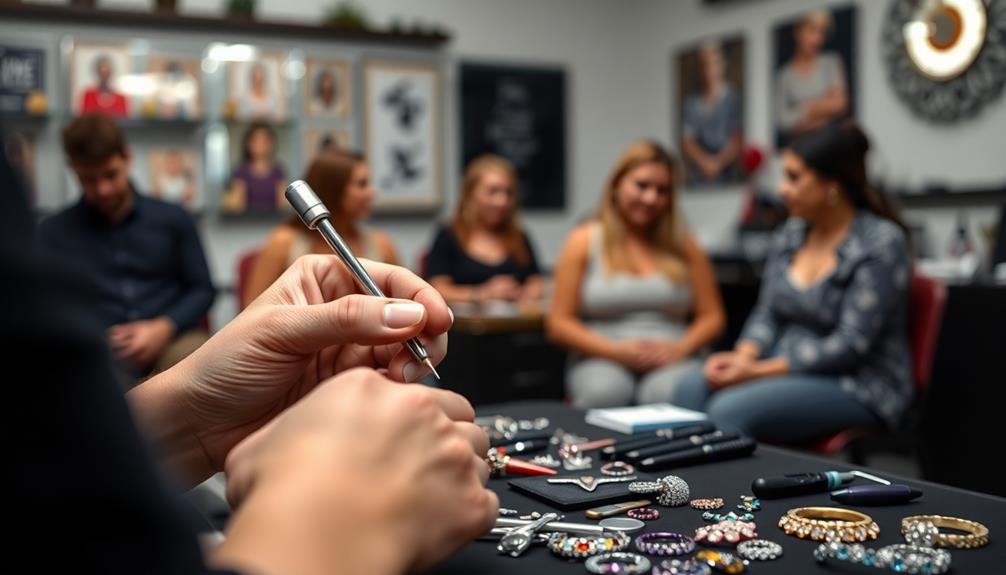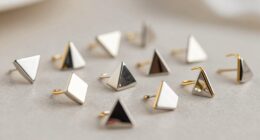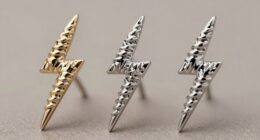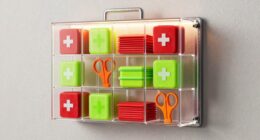Choosing the right piercing studio is essential for your safety. First, verify the studio has proper licensing and certification to operate legally. Pay close attention to hygiene; the workspace should be clean and organized, with strict sterilization procedures in place. Look for an experienced piercer who welcomes your questions and provides a portfolio. Avoid studios with high negative reviews or complaints about inadequate aftercare instructions. Trust your instincts—if something feels off, reconsider. Recognizing these red flags can help you make an informed choice, and there's more useful information on what to look for when selecting a studio.
Key Takeaways
- Ensure the studio is licensed and certified to operate legally, indicating professionalism and safety standards.
- Assess the cleanliness of the workspace and adherence to strict sterilization procedures to minimize health risks.
- Verify the piercer's experience and training, including a completed apprenticeship and knowledge of anatomy.
- Review online feedback for recent positive or negative experiences, highlighting the studio's service quality and hygiene practices.
- Trust your instincts during the consultation; a welcoming and organized environment is crucial for a safe piercing experience.
Importance of Licensing and Certification

When choosing a piercing studio, understanding the importance of licensing and certification is essential for your safety. Each county has its own licensing requirements, and in places like Los Angeles, piercers must register with the health department. A valid business license and health certificate are necessary for any studio to operate legally, so don't hesitate to ask for proof of these credentials before making an appointment.
These credentials not only guarantee that the studio is compliant with local regulations but also protect you as a client. When you see these documents displayed prominently in the studio, it builds trust and confidence in the services provided.
Remember, unlicensed studios pose significant risks, as they often lack the necessary standards for hygiene and professionalism. If you encounter a piercing studio that can't provide proper licensing, it's important to report them to health authorities.
Prioritizing your safety means choosing a studio that takes licensing seriously. By verifying their business license and health certificate, you're taking an important step in securing a safe and positive piercing experience.
Assessing Hygiene and Cleanliness

When you visit a piercing studio, check the organization and cleanliness of the workspace.
A well-maintained area shows the studio's commitment to hygiene and safety.
Make sure they follow proper sterilization procedures and have records available for you to review.
Sterilization Procedures Followed
How can you guarantee that your piercing experience is both safe and hygienic? Start by evaluating the sterilization procedures followed by the studio. Professional piercing studios must adhere to strict sterilization methods, including regular spore testing of their autoclaves. Ask to see the records; they should be readily available for your review.
A critical aspect of the process is the aseptic technique employed by the piercer. Make sure that all sterile tools are opened from their packages right in front of you, ensuring they haven't been contaminated beforehand. Additionally, confirm that needles and used tools are disposed of in designated biohazard containers. This step is essential for maintaining a clean environment.
Hand hygiene also plays an important role. Piercers should wash their hands thoroughly before putting on gloves, demonstrating their commitment to cleanliness.
Workspace Organization Observed
A well-organized workspace speaks volumes about a piercing studio's commitment to hygiene and safety. When you walk in, take note of how clean and organized everything appears. A professional studio should have distinct zones for retail, waiting, and piercing areas, guaranteeing proper functionality and minimizing cross-contamination.
In the piercing room, look for bright lighting and good ventilation. A hand-washing sink is crucial for maintaining a sterile environment during procedures. You should also check that the studio has a dedicated sterilization area, as public bathrooms shouldn't be used for cleaning contaminated tools. This area should be off-limits to clients, reinforcing the significance of a professional approach.
Another key indicator of workspace organization is the studio's adherence to sterilization protocols. Regular spore testing of autoclaves should be conducted, with records available for your review. This transparency builds trust in their hygiene practices.
Additionally, confirm that all sterile tools and jewelry are opened in your presence; it's an essential step in maintaining a clean and organized workspace. By paying attention to these details, you can feel confident in your choice of piercing studio.
Evaluating Experience and Training

Before selecting a piercing studio, it's essential to evaluate the experience and training of the professional piercers. Start by verifying that they've completed an apprenticeship under a senior piercer. This experience guarantees they've received practical training and mentorship, which is fundamental for mastering their craft.
A solid understanding of anatomy is also important, as it helps piercers assess your body's suitability for specific piercings, reducing the risk of complications.
When you're at the studio, don't hesitate to ask questions about their techniques, comfort levels, and aftercare. This not only shows your interest but also gives you insight into the piercer's professionalism and knowledge.
Experienced piercers should be able to provide a portfolio of healed piercings, showcasing their skills and the results you can expect.
Lastly, inquire about their commitment to continuous education. Professional piercers should stay updated on the latest in anatomy and jewelry styles to guarantee they follow best practices and safety standards.
Analyzing Online Reviews
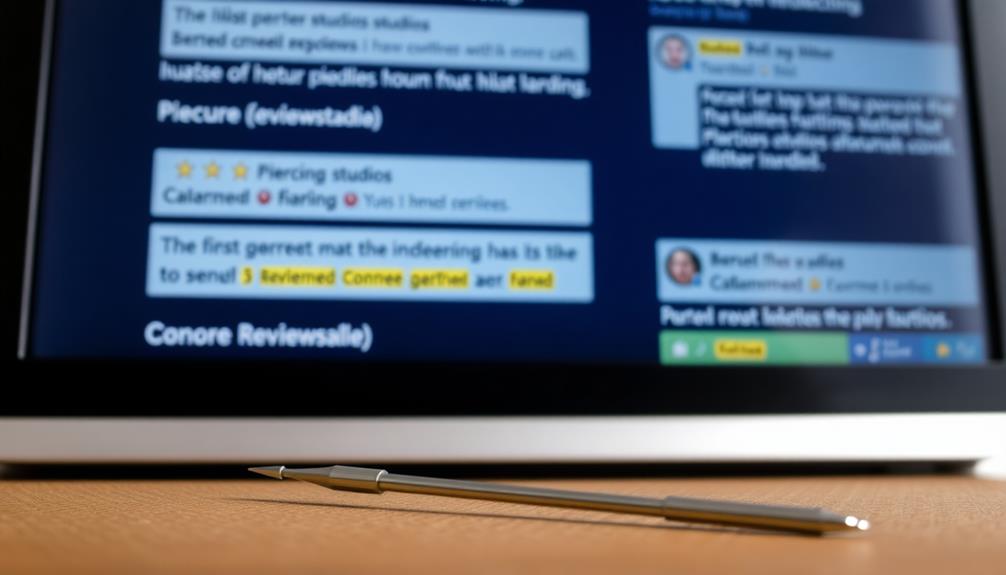
When you check online reviews for a piercing studio, look for positive indicators like praise for specific piercers and the quality of jewelry used.
Be cautious of warning signs, especially if you notice a trend of recent negative feedback about hygiene or customer service.
Recent reviews can be particularly telling, so focus on the latest experiences to gauge the studio's current standards.
Positive Indicators to Consider
While sifting through online reviews, you'll find that positive feedback can reveal a lot about a piercing studio's quality and reliability. High volumes of recent positive reviews on platforms like Google and Yelp often indicate consistent professionalism and excellent customer service.
When you come across reviews, pay attention to specific mentions of cleanliness, the piercer's knowledge, and effective aftercare guidance. These details highlight the studio's commitment to safety and hygiene.
Look for patterns in the feedback, such as repeat customers or mentions of successful healing experiences. These indicators suggest that the studio is reputable and reliable, giving you more confidence in your choice.
Also, consider how the positive reviews complement the piercer's portfolio. A strong portfolio showcasing their work can further validate the positive testimonials you've read.
Lastly, transparency regarding jewelry options can enhance your overall experience. So, take the time to analyze the glowing reviews in conjunction with the studio's offerings.
This thorough research will help you make an informed decision, ensuring you find a piercing studio that meets your expectations and prioritizes your safety.
Warning Signs to Avoid
Identifying warning signs in online reviews can save you from an unpleasant piercing experience. Pay close attention to the number of negative reviews on platforms like Google and Yelp. A high volume of these can indicate poor service or unsafe practices at a piercing studio.
Don't just focus on the overall rating; look for patterns in feedback that mention unprofessional behavior or hygiene issues—these are significant red flags to watch.
Prioritize recent reviews, especially those from the last few months. They're more indicative of the studio's current quality. If multiple reviews highlight similar concerns, it's a strong sign to steer clear.
Conversely, positive reviews that emphasize customer satisfaction and trust can signal a reputable studio.
Also, look for testimonials that detail the quality of aftercare support and follow-up. A studio that offers ongoing client support is essential for successful healing.
Recent Activity Importance
Negative reviews can be a clear indicator of potential issues, but recent activity in online feedback reveals even more about a piercing studio's current practices. To make an informed choice, you should pay close attention to recent reviews on platforms like Google and Yelp. A high volume of negative reviews could suggest systemic problems, like poor hygiene or unprofessional staff.
Here's a quick overview of what to look for:
| Aspect | Importance |
|---|---|
| Recent Reviews | Reflect current practices |
| Negative Reviews | Indicate potential red flags |
| Patterns in Feedback | Help identify specific issues |
| Positive Reviews | Highlight professional standards |
| Studio Reliability | Essential for a safe experience |
When you read recent reviews, look for patterns, especially repeated complaints about specific piercers or procedures. Positive feedback often emphasizes hygiene and quality of jewelry, which are critical for your safety and satisfaction. By analyzing online reviews, you can gauge the studio's commitment to excellence, ensuring you make a well-informed decision for your piercing journey.
Recognizing Red Flags in Studios

When choosing a piercing studio, it's crucial to watch for red flags that signal potential issues. Ignoring these can lead to complications and unsafe experiences.
Here are three key red flags to look out for:
- Use of Piercing Guns: If the studio uses piercing guns instead of single-use needles, that's a major concern. Piercing guns can cause more trauma and increase the risk of cross-contamination.
- Lack of Sterilization Equipment: If you notice an absence of proper sterilization equipment or the staff is hesitant to discuss their sterilization methods, it's a sign of inadequate hygiene practices. This could jeopardize your safety.
- No Portfolio or Aftercare Instructions: A studio without a portfolio or social media presence might be unprofessional and inexperienced. Additionally, if they don't provide clear aftercare instructions, it shows a lack of commitment to your health and successful healing.
Understanding Safety Practices
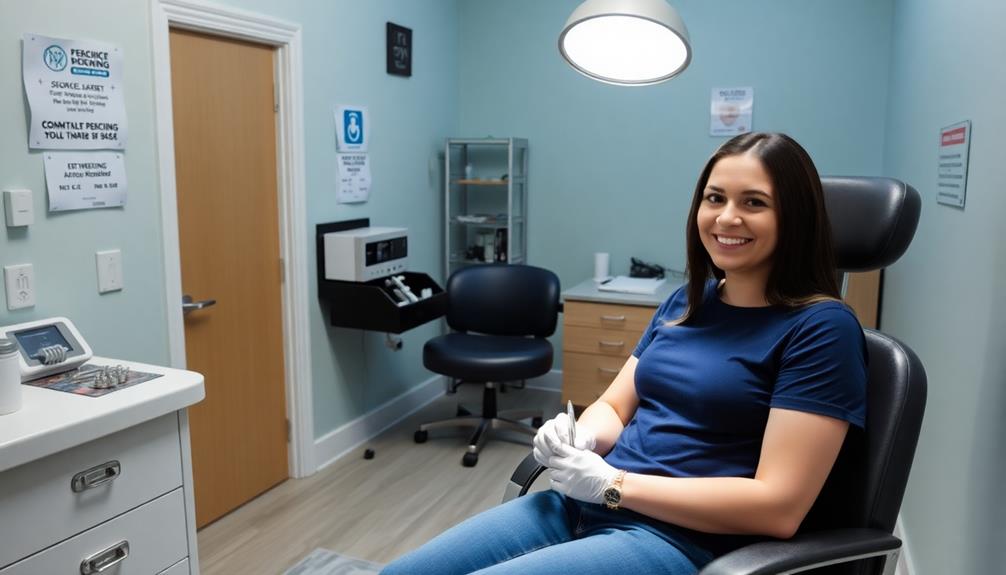
Choosing a piercing studio means prioritizing your safety, and understanding the studio's safety practices is fundamental. First, confirm the studio uses single-use needles, which should be opened in front of you. This minimizes the risk of cross-contamination and guarantees that you're getting a fresh needle.
Next, verify that the piercer follows strict sterilization protocols. Ask about regular spore testing of autoclaves, and don't hesitate to request proof of successful sterilization cycles.
You should also check the cleanliness and organization of the piercing area. A professional studio will have clear separation of zones for different activities, including a sterilization area that's off-limits to the public.
Inquire about the piercer's training and experience, as proper training is essential for safe practices and understanding anatomy.
While you'll receive aftercare instructions, it's important to confirm they align with current standards. These instructions play a significant role in reducing infection risks and promoting proper healing.
Importance of Aftercare Instructions
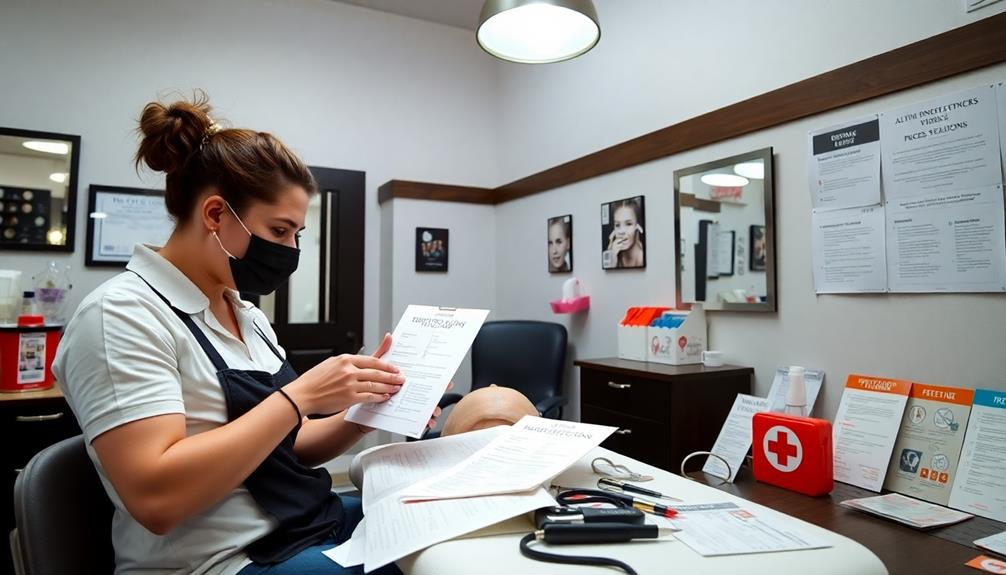
Aftercare instructions are your best ally in ensuring a smooth healing process following a piercing. Proper aftercare is essential to minimize complications like infections or prolonged healing times.
When you visit a piercing studio, make sure they provide clear aftercare guidelines that align with APP standards. Here are three important points to keep in mind:
- Written Instructions: You should receive written or electronic aftercare instructions during your visit. This allows you to reference them whenever needed.
- Thorough Explanation: The piercer should take the time to explain aftercare procedures in detail. This reduces the risk of infection and promotes effective healing.
- Encouragement to Ask Questions: Don't hesitate to ask questions about the aftercare process. A good piercer will encourage you to voice any concerns, enhancing your understanding of the healing process.
Studio Environment and Setup

A clean and organized studio environment plays an indispensable role in your piercing experience. When you step into a piercing studio, look for distinct zones, such as a retail counter, a waiting area, and a dedicated, sanitized piercing room. This setup guarantees a clear separation between different activities, promoting overall safety.
The piercing room should be well-lit and properly ventilated, equipped with a hand-washing sink to maintain hygiene during procedures. This is vital, as it allows the piercer to wash their hands before and after your piercing.
Additionally, public bathrooms should never be used for cleaning contaminated tools. A designated sterilization area that's off-limits to clients is essential for guaranteeing tools are properly sanitized.
Pay attention to the cleanliness of the studio's workspace. A tidy environment reflects a commitment to professionalism and safety.
You should also watch for single-use needles that are opened in front of you, as this indicates adherence to strict hygiene standards and minimizes the risk of cross-contamination.
Evaluating Jewelry Quality
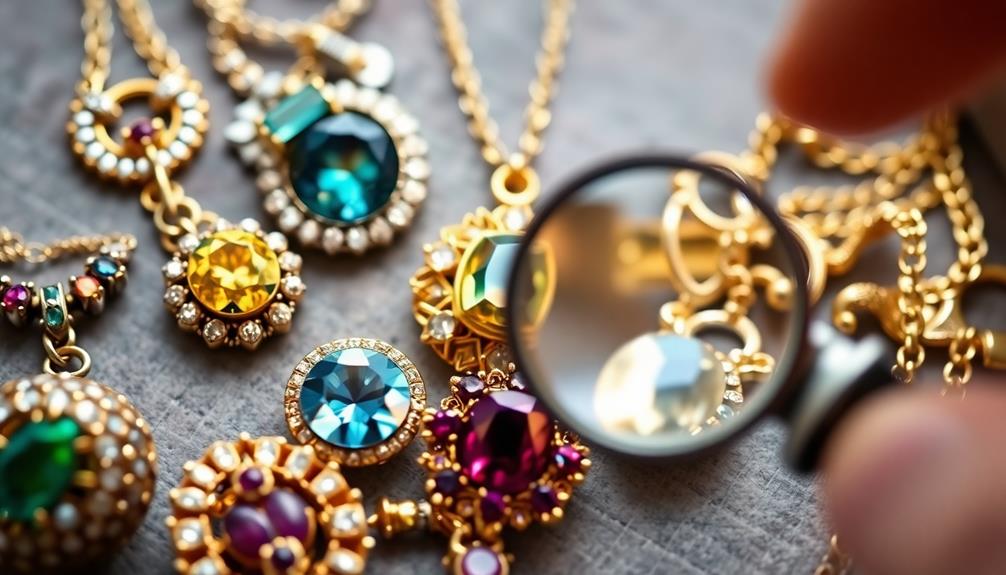
When selecting jewelry for your piercing, prioritize materials that are body-safe, like surgical steel, titanium, or 14k gold, to reduce the risk of allergic reactions.
Quality jewelry can greatly impact your healing process, so it's crucial to evaluate your options carefully.
Here are three key factors to take into account during your jewelry selection:
- Material Transparency: Always ask about the materials used in the jewelry. Reputable studios should willingly provide information on certifications for their materials. If they hesitate or seem vague, it's a red flag.
- Internally Threaded Options: Check if the jewelry is internally threaded. This design minimizes trauma during the piercing process, promoting better healing and comfort.
- Quality Assurance: Be cautious of studios that include low-quality jewelry in the piercing price. This often indicates subpar materials that could hinder healing.
Look for studios that offer a variety of high-quality jewelry options for purchase separately, as this shows a commitment to your health and satisfaction.
Trust Your Instincts

Trusting your instincts is essential in selecting the right piercing studio. If something feels off during your consultation or visit, it's a sign to evaluate other options. You should feel comfortable asking questions; a professional piercer will welcome your inquiries and provide clear answers. If they seem dismissive or annoyed, that's a potential red flag indicating unprofessionalism.
Pay attention to your comfort level with the piercer. If you feel rushed or uneasy, it's best to rethink your choice. An inviting, clean environment reflects a studio's commitment to hygiene and safety. If you notice a disorganized or unkempt space, it should raise concerns about their practices.
Additionally, observe the piercer's demeanor and communication style. Their professionalism and confidence in their skills can greatly affect your overall experience. If they seem unsure or lack enthusiasm, trust your instincts and look for someone who inspires confidence.
Frequently Asked Questions
How to Know if a Piercing Place Is Safe?
To know if a piercing place is safe, check for valid licenses, observe sterile practices, and inquire about the piercer's experience. A clean environment and positive client reviews also indicate a commitment to safety.
How Do I Know if My Piercer Is Good?
You wouldn't trust a chef without a Michelin star, right? So, check your piercer's portfolio, read reviews, verify they discuss anatomy and aftercare, and gauge their professionalism. A good piercer's confidence should shine through.
How Do You Know if a Piercing Will Suit Me?
To know if a piercing suits you, assess your anatomy and lifestyle. Consult with an experienced piercer who understands your unique features, ensuring they customize the jewelry and consider your healing process for the best results.
What to Look for When Getting a Piercing?
When getting a piercing, you should check the piercer's credentials, hygiene practices, and portfolio. Confirm they assess your anatomy, use sterile needles, and provide clear aftercare instructions to support your healing effectively.
Conclusion
Choosing the right piercing studio can make all the difference between a safe, enjoyable experience and a regrettable one. A clean, well-regulated studio isn't just a luxury; it's a necessity. While some studios may boast trendy decor, it's the hidden red flags that should raise your concerns. Trust your instincts—if something feels off, it probably is. Remember, a beautiful piercing begins and ends with your choice of studio, so prioritize safety over style.



